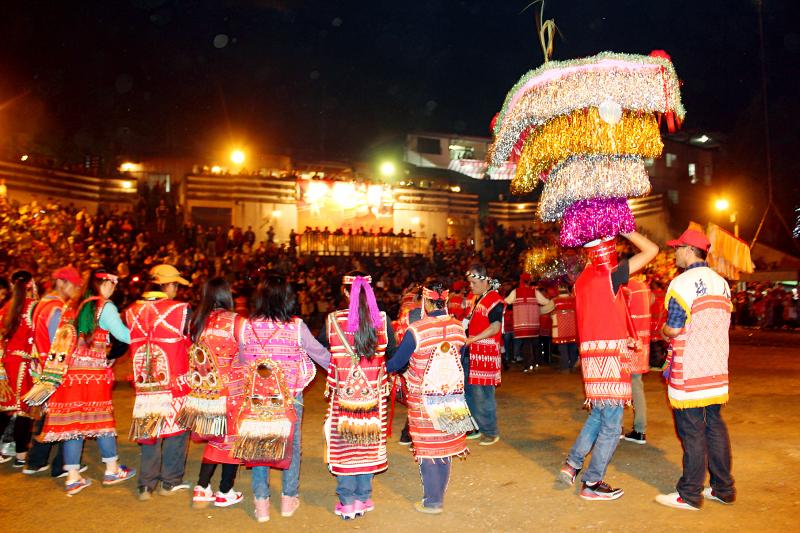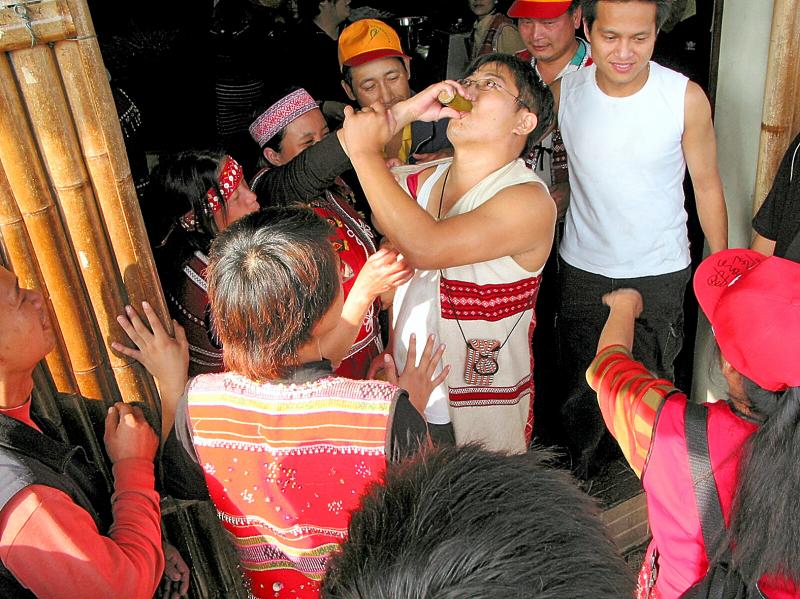Between 1988 and 1990 archaeologists excavated a limestone cave known as the Xiaoma site in Taitung County’s Chenggong Township (成功), near the famed arches of Sansiantai (三仙台). Found at the site was the only pre-Neolithic burial in Taiwan, dated by associated marine shells back to between 6,200-5,700 years. A skeleton was pulled from that burial and then stored in a National Taiwan University (NTU) museum for nearly three decades.
The area north of Chenggong once hosted Changbin Culture (長濱文化), a pre-ceramic society whose most well-known site is Baxian Cave, now a tourist stop off Provincial Highway 11. That culture is characterized by a complete lack of ceramics, agriculture and polished stone tools. Instead, its stone artifacts were made of stone taken from local beaches. Implements made of bone and antler are also known.
The terminus of that culture is generally set at roughly 5,000 years ago. Unfortunately, much of the work on Xiaoma, including the initial field report published in a local archaeology journal in 1991 by Huang Shih-Chiang (黃士強), is available only in Chinese.

Photo courtesy of Hsinchu County Government
These stone artifacts of the Changbin Culture belong to a chopper tool tradition that spans east and southeast Asia, suggesting that they were part of that culture and are unrelated to the current Austronesian populations of Taiwan.
Further, more recent work at Taitung’s Basian Caves (八仙洞) has yielded dates ranging from 27,000 to 15,000 years ago, with numerous flaked tool implements. The archaeologist excavating the site says the great number of flakes and stone implements shows similarities with sites in southeast Asia and the Ryukyus, a Japanese island chain.
Stone tool sites belonging to a pre-ceramic culture are also known from Taipei, Miaoli, Taichung, Tainan, Pingtung and Taitung, with some dating to 6,500 to 5,000 years ago. A tantalizing set of sites, submerged by reservoir development in Miaoli, yielded proto-hand axes and choppers, which the site excavator tentatively named Wangxing Culture (網形) and dated to between 50,000 and 8,000 years ago. That culture is not widely accepted among local archaeologists, however.

Photo: Tsai Meng-shang, Taipei Times
NEGRITO POPULATIONS ON TAIWAN?
The Austronesians are thought to have arrived on Taiwan a bit later, meaning that whoever carved those stone tools wasn’t a proto-Austronesian or Austronesian, but some other people. The obvious conclusion is that they were Negrito, one of the many short, dark peoples of southeast Asia and the Pacific lumped together under that label.
Negrito populations have long been hinted at in Taiwan. For as long as researchers have collected local legends on Taiwan, they have encountered stories of small dark people among the local aborigines. The widely-known Saisiyat “Festival of the Short People” commemorates the deaths of the last of them at Saisiyat hands. But other local Aboriginal groups have legends as well. DNA work also suggests the existence of Negrito populations in Taiwan, but the evidence is murky.
It was thus with great pleasure that I read “Female craniometrics support the ‘two-layer model’ of human dispersal in Eastern Eurasia” by Matsumura et al, which came out last month in Nature Scientific Reports. The authors of that paper pulled the skeleton from Xiaoma Cave out of its closet in 2016 and held it up to the light. They observed: “The short stature, short limbs and small cranial size of the Xiaoma individual indicate a close affinity to Negrito (Ayta) groups in the Philippines.”
They then performed an analysis of the cranium and compared it to a large database of crania from around the world.
“PCA analysis revealed that, in respect to overall cranial size, Xiaoma is very small (PC 1), and comparable to Negrito crania from the Philippines, San from South Africa and Veddah from Sri Lanka,” the authors wrote.
They explicitly link the shortness of the skeleton and smallness of the head to the legends found among the existing aboriginal peoples of Taiwan: [the statistical analysis] “supports many Formosan Austronesian oral traditions about the former existence of small and dark-skinned people in Taiwan.”
There you have it. The first confirmed skeletal remains of Negrito populations in Taiwan.
(Stay tuned, I’ve heard other interesting things about this find and about Negritos in Taiwan that I hope to write about in the coming months.)
That skeleton sat in the museum at NTU without being cleaned or reconstructed for nearly thirty years. That neglect seems a crime to me, but I asked an anthropologist about it, and he observed that archaeologists aren’t nearly as interested in skeletons as they are in the relics of cultures. It is just not their thing, he said.
POLITICAL DIMENSION
Like all human domains, history is the realm of realpolitik. For years the Austronesians in Taiwan have been the locus of efforts by both pro-China and pro-Taiwan groups to exploit their status as Taiwan’s oldest residents and authenticate their respective nationalisms.
Pro-China types have tended to emphasize that the Austronesians came originally from what is now China. This of course emphasizes a very early link between “Taiwan” and “China.”
Conversely, there is a strain of Taiwanese nationalism that emphasizes Taiwanese identity as a biological construct rooted in intermixing of settlers from China and local Aboriginal peoples, essentializing “Taiwaneseness” and ethnicity in the DNA.
Marie Lin (林媽利), the well-known hematologist and medical researcher, is the most vocal proponent of this position. She has claimed that Taiwanese are “ethnically distinct” from the Han and that 85 percent of Hakka and Hoklo have aboriginal genetic markers. These claims are nonsensical, but they resonate with many (Mark Munsterhjelm’s brilliant Living Dead in the Pacific has an unexcelled critique of Lin’s claims).
These claims run in tandem with another argument that links Taiwaneseness to descent from the Pingpu people, the Aboriginal peoples of the western plains. This view is based on bogus ideas of “blood” and descent that nevertheless run deep in Taiwan’s ideas of citizenship and identity.
The best answer to the pro-China claims and blood-based descent views of Taiwan’s aborigines is an identity rooted in civic nationalism, which does away with the whole idea of ethnicity as something biologically-rooted. Ironically, the Negrito skeleton may help, for it does an end run around both these political views.
There may be Negrito DNA in local populations, but the signal is insignificant and cannot be used as the foundation for any claims of “blood” and ethnicity. There are no living Negritos on Taiwan and thus, they cannot be the locus of anyone’s nationalist beliefs.
By the same token, the Negrito groups are long thought to have moved across the southern part of the Asian supercontinent, to southeast Asia, and then spreading north and south. They did not enter Taiwan from the west and what is now China, but from the south. Hence, they adumbrate the pro-China view that Taiwan is linked to China because one way or another it is origin of everyone who has lived in Taiwan.
The Negritos were here first, and they were here for tens of thousands of years before anyone else.
Not out of China.
Notes from Central Taiwan is a column written by long-term resident Michael Turton, who provides incisive commentary informed by three decades of living in and writing about his adoptive country. The views expressed here are his own.

Cheng Ching-hsiang (鄭青祥) turned a small triangle of concrete jammed between two old shops into a cool little bar called 9dimension. In front of the shop, a steampunk-like structure was welded by himself to serve as a booth where he prepares cocktails. “Yancheng used to be just old people,” he says, “but now young people are coming and creating the New Yancheng.” Around the corner, Yu Hsiu-jao (饒毓琇), opened Tiny Cafe. True to its name, it is the size of a cupboard and serves cold-brewed coffee. “Small shops are so special and have personality,” she says, “people come to Yancheng to find such treasures.” She

Late last month Philippines Foreign Affairs Secretary Theresa Lazaro told the Philippine Senate that the nation has sufficient funds to evacuate the nearly 170,000 Filipino residents in Taiwan, 84 percent of whom are migrant workers, in the event of war. Agencies have been exploring evacuation scenarios since early this year, she said. She also observed that since the Philippines has only limited ships, the government is consulting security agencies for alternatives. Filipinos are a distant third in overall migrant worker population. Indonesia has over 248,000 workers, followed by roughly 240,000 Vietnamese. It should be noted that there are another 170,000

Hannah Liao (廖宸萱) recalls the harassment she experienced on dating apps, an experience that left her frightened and disgusted. “I’ve tried some voice-based dating apps,” the 30-year-old says. “Right away, some guys would say things like, ‘Wanna talk dirty?’ or ‘Wanna suck my d**k?’” she says. Liao’s story is not unique. Ministry of Health and Welfare statistics show a more than 50 percent rise in sexual assault cases related to online encounters over the past five years. In 2023 alone, women comprised 7,698 of the 9,413 reported victims. Faced with a dating landscape that can feel more predatory than promising, many in

“This is one of those rare bits of TikTok fitness advice with a lot of truth behind it,” says Bethan Crouse, performance nutritionist at Loughborough University. “Sometimes it’s taken a bit too literally, though! You see people chugging protein drinks as they’re scanning out of their gym.” Crouse recommends the athletes she works with consume 20-30g of protein within 30-60 minutes of finishing a resistance training session. “The act of exercising our muscles increases the breakdown of muscle proteins,” she says. “In order to restore, or hopefully improve them — and get gains such as increased muscle mass or strength —